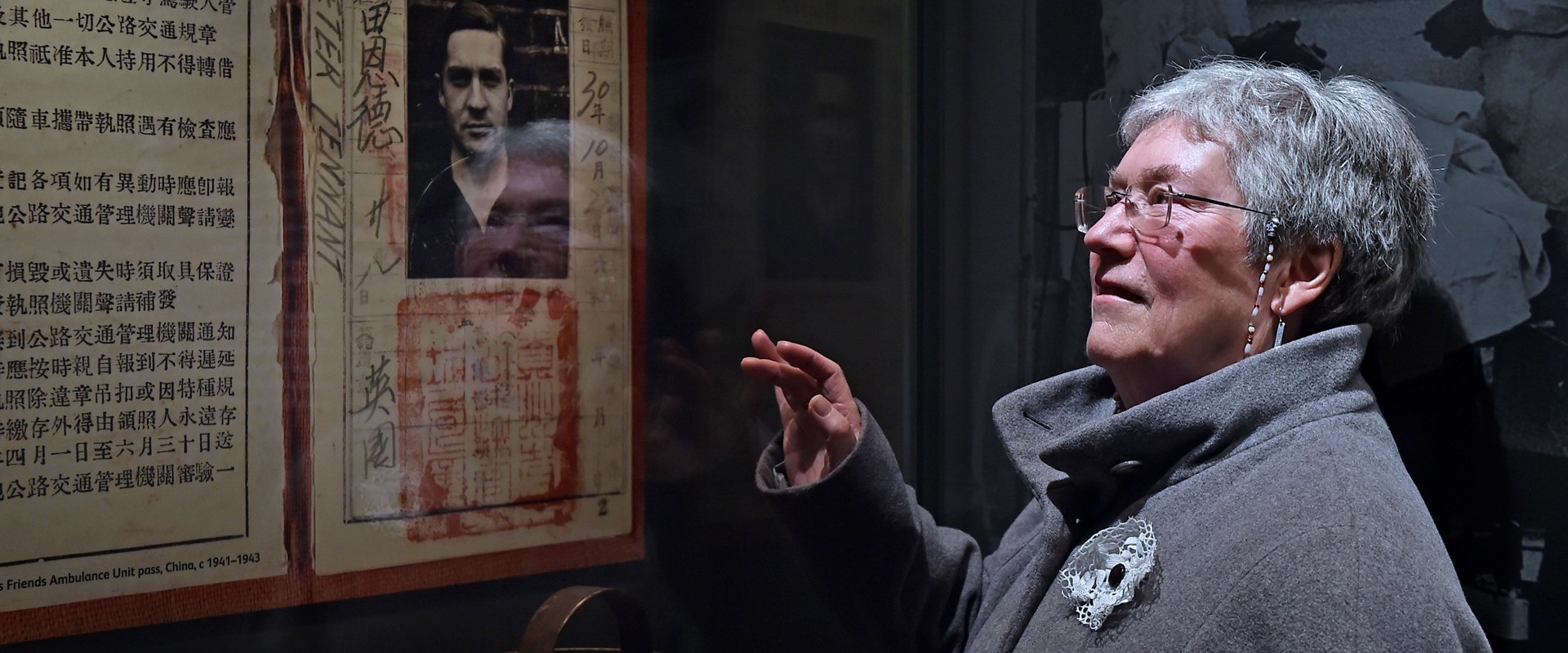#ConscienceMatters
A new exhibition, Conscience Matters, will open at the National War Museum in Edinburgh on Friday 8 March, exploring the little-known story of British conscientious objectors of the Second World War. The exhibition explores some of the reasons people refused to take up arms during war and how such refusals are perceived by society.
In the Second World War, the reintroduction of conscription meant that British citizens were expected to contribute directly to the war effort. Those who refused on the grounds of a ‘sincere and genuine’ opposition to military service could apply for an exemption. People objected for a variety of religious, political and humanitarian reasons, and were known as conscientious objectors.
To gain exemptions from conscription on the grounds of conscience, individuals were required to appear before a tribunal and produce evidence about their honesty and commitment to their principles.
The exhibition will feature paintings, music, letters, diaries, poems and speeches made by conscientious objectors in Britain during the Second World War as they grappled with the meanings and implications of conscience in a time of war.
Otherwise invisible and private convictions were made to be public, persuasive and tangible. The exhibition tells the stories of individual conscientious objectors including; Scottish author Fred Urquhart, poet Edwin Morgan, artist Sax Shaw, Constance Margaret Bull, a trained nurse and volunteer for the Friends Ambulance Unit (FAU), Tom Burns, also a volunteer for the FAU, and others who fought to share their convictions on the grounds of conscience. The exhibition will examine the application process, the reasons people had for opposing conscription, and what happened to them as a result.
An interactive display will invite visitors to put themselves in the place of the tribunal, weighing testimony and deciding whether an application should pass or fail, whilst a concluding film will feature a range of opinion on the subject of conscience.
If successful in their application, conscientious objectors could be exempted from national service altogether, or more commonly assigned to other non-combatant roles such as bomb disposal, hospital work or agricultural labour. Some of those whose applications were unsuccessful were ultimately imprisoned.
The exhibition draws on a major research project led by the University of Edinburgh to study British conscientious objectors in the Second World War. The project examines the motivations and dilemmas of conscientious objectors, and the ways in which a decision not to take up arms affected both their close relationships and their rights and obligations as British citizens. The research is funded by the European Research Council.
Tobias Kelly, Professor of Political and Legal Anthropology at the University of Edinburgh said:
“Britain was one of the first countries in the world to grant a legal right to conscientious objection to military service during war time. In the Second World War, over 60,000 people registered as conscientious objectors. Although now largely forgotten, many of these people went on to become significant cultural and political figures in post-war Britain, founding Amnesty International and Oxfam, amongst other things. Their fascinating stories will invite visitors to think about the wider nature and implications of conscience and to ask how far we might go for a cause in which we believe.”
Further information on exhibition and images from:
Bruce Blacklaw or Katie McAllister, Press Office, National Museums Scotland, 0131 247 4165, b.blacklaw@nms.ac.uk
Notes to editors
-
National Museums Scotland is one of the leading museum groups in the UK and Europe and it looks after collections of national and international importance. The organisation provides loans, partnerships, research and training in Scotland and internationally. Our individual museums are the National Museum of Scotland, the National Museum of Flight, the National Museum of Rural Life and the National War Museum. The National Museums Collection Centre in Edinburgh houses conservation and research facilities as well as collections not currently on display.
-
The National War Museum (www.nms.ac.uk/war) in Edinburgh Castle has six permanent galleries which explore Scotland’s military history from the 17th century to the present day, from world-changing events to the everyday life of Scottish servicemen. Objects on display include uniforms, insignia, medals, decorations, weapons, paintings, ceramics and silverware, including many objects and stories connected to the First World War.
-
Bheireadh Oifis nam Meadhanan eadar-theangachadh Gàidhlig den bhrath-naidheachd seachad do bhuidhinn mheadhanan bharantaichte. Cuiribh fios do dh'Oifis nam Meadhanan airson bruidhinn air cinn-latha freagarrach.

